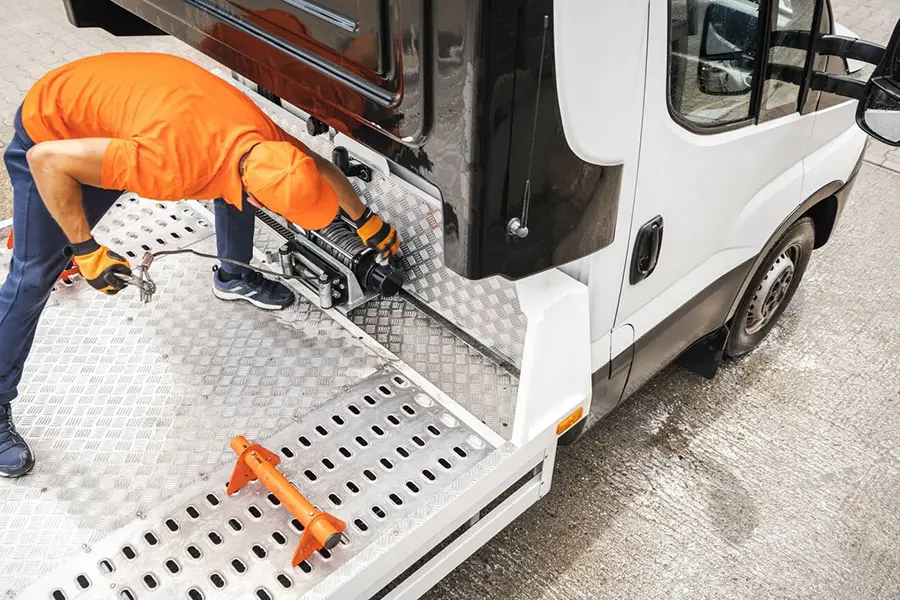When your vehicle needs to be towed, safety is paramount. Choosing a reputable towing company is the first step. Not all towing services offer the same level of expertise and care.

Preparing Your Vehicle for Towing:
- Secure your vehicle: Park on a flat surface, engage the parking brake and remove loose items.
- Check tire inflation: Ensure your tires are properly inflated to prevent damage during towing.
- Consider towing capacity: Ensure the towing company’s vehicle can tow your car safely.
Choosing a Reputable Towing Company
When you need a towing service, reliability, and expertise are crucial. Here’s how to choose a reputable company:
- Check Online Reviews: Look for companies with consistently high ratings and positive customer feedback.
- Verify Licensing and Insurance: Ensure they are fully licensed and insured to protect your vehicle.
- Assess Service Offerings: A reputable company should provide more than just basic towing services, such as roadside assistance and vehicle recovery.
Following these steps, you can find a towing company that will handle your vehicle carefully and professionally.
Preparing Your Vehicle for Towing
Before towing your vehicle, take these essential steps to ensure a safe and efficient process:
- Park on a flat surface: This will make it easier to attach the towing equipment.
- Engage the parking brake: Prevent your vehicle from rolling while being towed.
- Secure loose items: Prevent objects from shifting during transport, which could cause damage.
- Check tire inflation: Ensure tires are properly inflated to avoid additional strain.
- Set transmission: Drive in neutral (manual) or park (automatic) according to the manufacturer’s instructions.
By following these guidelines, you can minimize the risk of damage to your vehicle during towing.
Towing Safety Guidelines
To ensure a safe and efficient towing experience, follow these guidelines:
1. Check Towing Capacity:
- Refer to your vehicle’s manual to determine its towing capacity.
- Avoid exceeding the limit to prevent dangerous situations.
2. Use Appropriate Equipment:
- Hitch: Use a hitch rated for the weight of your trailer.
- Safety chains: Cross them beneath the trailer tongue for added security.
- Lights: Ensure all lights (brake, signal, hazard) are functioning on both vehicles.
3. Verify Load and Tire Condition:
- Balance the load to prevent swaying.
- Check tire inflation on both vehicles.
4. Adjust Driving Habits:
- Drive slower than usual.
- Maintain a safe distance between vehicles.
- Make wider turns to accommodate the additional length.
- Frequent checks: Regularly inspect connections and the condition of both vehicles.
By following these guidelines, you can tow your vehicle safely and confidently.
